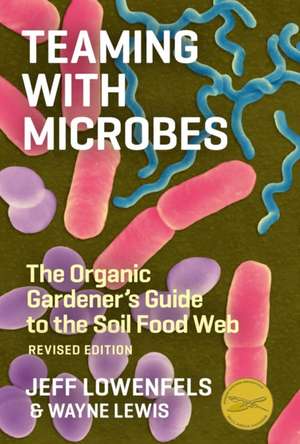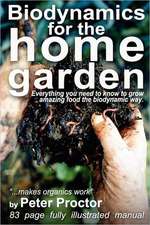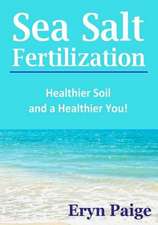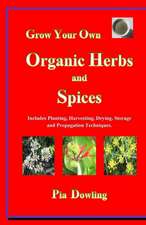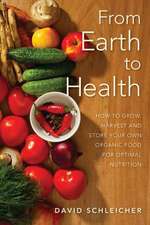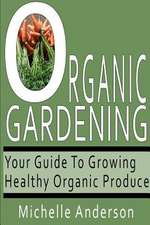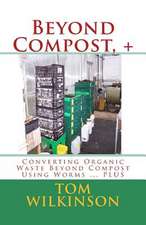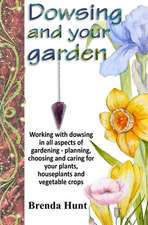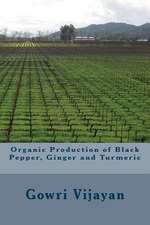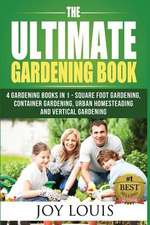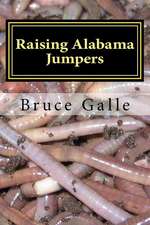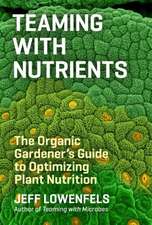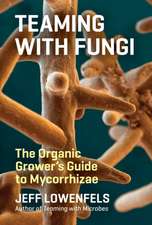Teaming with Microbes
Autor Jeff Lowenfelsen Limba Engleză Hardback – 31 ian 2010
"
Preț: 140.30 lei
Nou
Puncte Express: 210
Preț estimativ în valută:
26.85€ • 29.15$ • 22.55£
26.85€ • 29.15$ • 22.55£
Carte disponibilă
Livrare economică 01-15 aprilie
Livrare express 15-21 martie pentru 35.77 lei
Preluare comenzi: 021 569.72.76
Specificații
ISBN-13: 9781604691139
ISBN-10: 1604691131
Pagini: 220
Dimensiuni: 156 x 232 x 22 mm
Greutate: 0.63 kg
Ediția:Revised
Editura: Timber Press (OR)
ISBN-10: 1604691131
Pagini: 220
Dimensiuni: 156 x 232 x 22 mm
Greutate: 0.63 kg
Ediția:Revised
Editura: Timber Press (OR)
Recenzii
If you want to get a good understanding of how soils really work, and learn how to really feed your soil (and thus, your plants), there is a great book that explains it all very well, and also explains how to make really good compost and compost tea. It is concise and uses nonscientific terminology. The book isTeaming With Microbes; A Gardener's Guide To The Soil Food Webby Jeff Lowenfels and Wayne Lewis. --Jared R. McKinley "DrWeil.com News "
Descriere
Lowenfels and Lewis describe the activities of the organisms that make up the soil food web and explain how to cultivate the life of the soil. This text offers an accessible guide for gardeners who want to grow healthy, vigorous plants without resorting to chemicals.
Textul de pe ultima copertă
Winner of the Garden Writers Association Gold Award for Best Book Writing
Smart gardeners know that soil is anything but an inert substance. Healthy soil is teeming with life--not just earthworms and insects, but a staggering multitude of bacteria, fungi, and other microorganisms. When we use chemical fertilizers, we injure the microbial life that sustains healthy plants, and thus become increasingly dependent on an arsenal of artificial substances, many of them toxic to humans as well as other forms of life. But there is an alternative to this vicious circle: to garden in a way that strengthens, rather than destroys, the soil food web--the complex world of soil-dwelling organisms whose interactions create a nurturing environment for plants. By eschewing jargon and overly technical language, the authors make the benefits of cultivating the soil food web available to a wide audience, from devotees of organic gardening techniques to weekend gardeners who simply want to grow healthy, vigorous plants without resorting to chemicals.
This revised edition updates the original text and includes two completely new chapters--on mycorrhizae (beneficial associations fungi form with green-leaved plants) and archaea (singled-celled organisms once thought to be allied to bacteria).
Smart gardeners know that soil is anything but an inert substance. Healthy soil is teeming with life--not just earthworms and insects, but a staggering multitude of bacteria, fungi, and other microorganisms. When we use chemical fertilizers, we injure the microbial life that sustains healthy plants, and thus become increasingly dependent on an arsenal of artificial substances, many of them toxic to humans as well as other forms of life. But there is an alternative to this vicious circle: to garden in a way that strengthens, rather than destroys, the soil food web--the complex world of soil-dwelling organisms whose interactions create a nurturing environment for plants. By eschewing jargon and overly technical language, the authors make the benefits of cultivating the soil food web available to a wide audience, from devotees of organic gardening techniques to weekend gardeners who simply want to grow healthy, vigorous plants without resorting to chemicals.
This revised edition updates the original text and includes two completely new chapters--on mycorrhizae (beneficial associations fungi form with green-leaved plants) and archaea (singled-celled organisms once thought to be allied to bacteria).
